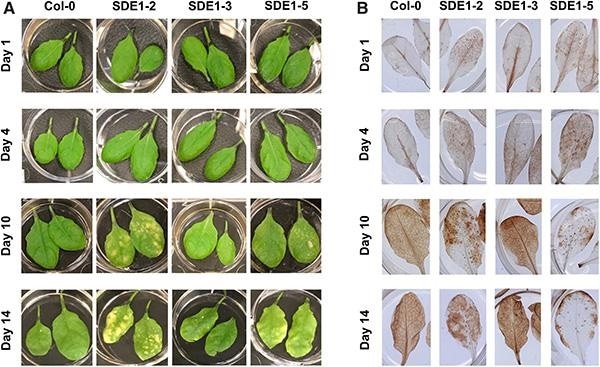Huanglongbing (HLB), also called citrus greening disease, is detrimental to the citrus industry and causes unparalleled levels of destruction around the world. But despite this fact, there is no proven treatment for this.

Sec-delivered effector 1 (SDE1) induces reactive oxygen species (ROS) accumulation prior to yellowing symptoms in Arabidopsis thaliana leaves. Image Credit: Kelley J. Clark, Zhiqian Pang, Jessica Trinh, Nian Wang, and Wenbo Ma.
Ever since the emergence of this disease in the United States in the early 2000s, scientific activities have increased tremendously. But there is still a lack of knowledge about the genetic mechanism that contributes to the disease.
Getting into the molecular details behind what contributes to citrus greening symptom development and disease progression is key to finding sustainable solutions to combat the pathogen. We bring the community one step closer to understanding these mechanisms with our research.”
Wenbo Ma, Plant Pathologist, University of California, Riverside
Ma and her collaborators from the University of Florida and the University of California employed molecular plant pathology techniques to dissect the processes of the ongoing tug-of-war between the bacterial pathogen and the citrus host. The bacterial pathogen is responsible for causing the citrus greening disease.
To understand how the bacterial pathogen causes citrus greening disease, we studied the function of effectors produced by the pathogen that can directly affect citrus. We demonstrated that one of the effectors promotes bacterial colonization and disease development in citrus. Our studies indicate that this likely occurs by the pathogen's manipulation of host senescence (process of aging).”
Wenbo Ma, Plant Pathologist, University of California, Riverside
It has been shown that host senescence can be exploited by other pathogens, but this is the first indication that this senescence also plays a crucial role in the development of citrus greening disease.
The team hopes that this understanding will allow agricultural systems to improve their resistance to this disease and promote research on the aspect of molecular plant pathology of citric greening disease.
Source:
Journal reference:
Clark, K. J., et al. (2020) Sec-Delivered Effector 1 (SDE1) of ‘Candidatus Liberibacter asiaticus’ Promotes Citrus Huanglongbing. Molecular Plant-Microbe Interactions. doi.org/10.1094/MPMI-05-20-0123-R.